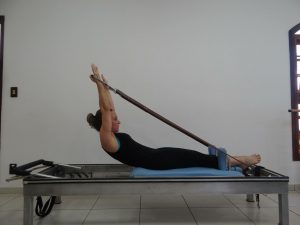
Has a grinding sensation in your shoulder brought your daily life to a screeching halt? Whether your shoulder pain stems from a severe fracture or, more commonly, arthritis, a total shoulder replacement might be your best course of action.
If you and your doctor have exhausted all other treatment options, chances are a total shoulder replacement is in your near future. Before putting that surgery on the books, you might want to take a little time to plan for it.
An often overlooked question about total shoulder replacement surgery is, “When is the best time of year for a total shoulder replacement?” Let’s look at the big picture before diving into all the details.
What is a Total Shoulder Arthroplasty?
A total shoulder arthroplasty, otherwise known as a total shoulder replacement, involves removing parts of the shoulder joint and replacing them with artificial implants. It helps people suffering from arthritis or shoulder injuries severe enough to cause debilitating pain and limited range of motion.
A total shoulder replacement is often the only course of action to take once cartilage in the shoulder joint breaks down enough to allow the bones of the joint to rub against one another. This contact causes damage to the bones. As the damage becomes more severe, so does the pain.
If the pain interferes with everyday activities, a total shoulder replacement is often the only choice. The artificial implants work to lessen the pain and restore normal motion of the shoulder joint.
When Should You Consider Having a Shoulder Replacement?
If you’re experiencing a limited range of motion and a painful grating sensation in your shoulder, it’s past time to consult with your doctor. Nonsurgical options should always be explored first.

If those non-surgical treatments are ineffective and your pain has become debilitating, it’s most likely time for a total shoulder replacement.
Other signs that you may need a total shoulder replacement include:
- Pain and weakness in your shoulder
- Pain interferes with everyday activity and sleep
- Treatments including physical therapy, cortisone, or non-invasive surgeries have failed to eliminate the pain.
When You’ve Tried All Conservative Option
A total shoulder replacement isn’t usually the first course of action when it comes to treating shoulder pain. There are some things your doctor will probably recommend first. These may include:

- Physical therapy
- Cortisone injections or other anti-inflammatory medications
- Non-invasive surgeries, like rotator cuff repair or fracture repair
When Pain Affects the Quality of Life
If you’ve exhausted all conservative options and your shoulder pain is still affecting your quality of life, it’s time to consider a total shoulder replacement.
When you Begin to Dread Activity Because of Shoulder Pain
If reaching into a cabinet or lifting your arm to wave sounds like the stuff nightmares are made of, it’s time to take care of that shoulder pain once and for all. Take back your life with a total shoulder replacement.
When is the Best Time of Year for a Total Shoulder Replacement?
There is no one-size-fits-all when it comes to answering this question. The truth is, you’ll need to consider your personal situation when deciding what time of year to schedule your shoulder replacement. Consider the following before scheduling.
Insurance Coverage

Take a look at your insurance coverage, especially the deductible and max out of pocket. Consider scheduling your surgery for the first of the year if you have a high deductible to have the rest of the year covered.
Let’s say your insurance will cover 100% of your surgery once you hit your deductible for the year. Each visit you make before surgery goes towards meeting this deductible. Once that’s hit, your insurance should cover the costs.
Not all insurance policies are created equally, so make sure you contact yours to get the full breakdown before scheduling your surgery.
Work Options

Unless you have a pretty hefty stash of cash, you’ll need to figure out your options for work.
- Can you work from home?
- Will you be able to physically complete your job during your recovery time?
- If working from home isn’t an option or if you can’t meet the physical requirements, you’ll need to plan for time off. While doing so, consider how you’ll cover the expenses you’ll accrue while you’re out.
Do you have PTO days to cover the surgery, or at least part of it?
The last thing you’ll want to deal with while recovering from your shoulder replacement surgery is falling into financial hardship due to said surgery.
Depending on the job you have, you may be able to return to work as soon as 2 to 3 weeks after surgery.
Make sure you have up-to-date information on your remaining PTO days. If it’s not enough to cover your recovery time, it’s time to start planning.
- How many days are covered?
- How long will you have between paychecks?
- What expenses will you have during this time and do you have enough saved to cover them?
When Family or Friends are Available for Help

After your total shoulder replacement, you’re going to need some assistance. While you’re recovering and going through physical therapy, there are some things you just won’t be able to do. Especially during the first few days right after surgery.
You may require help:
- Getting dressed
- Preparing meals
- Grocery shopping
- Getting to and from appointments, as you won’t be able to drive right away
Check with family and friends to see when they’re available to help. It’s much easier to find support in advance and work around their plans. Trying to find several people available at a specific time once your surgery is already booked could prove difficult.
Preparing for Shoulder Replacement Surgery
What is the Typical Timeline for Recovery After a Total Shoulder Replacement
Everyone will progress through recovery at their own pace, but here’s a loose outline of what to expect throughout each stage.
Week 1
- You’ll need help with everyday tasks.
- You need to keep the incision site completely dry until it is healed.
- Small exercises will be assigned to help retain range of motion.
- Your sling should be worn around the clock.
Weeks 2 through 4
- Sutures are removed in week 2, but your sling should still be worn.
- Lifting anything heavier than a couple of pounds is off-limits. If you have children or pets, you’ll still need help caring for them at this point.
- Physical therapy visits start.
Week 6
- This is about the time the full range of motion returns and with it the capability to drive.
- Depending on your job, you may be able to return to work.
- In physical therapy, you’ll start to work on strength training.
Month 3
- Your pain should lessen significantly at this point, while your range of motion increases.
- While you still need to avoid contact sports, you can return to your typical daily routines, including an approved workout routine.
Month 6
- In most cases, your shoulder should be completely healed between 3 and 6 months post-surgery.
- You should be pain-free by now.
- Keep in mind that it can take up to a year to regain full strength and range of motion.
How Long Do Shoulder Replacements Last?
With significant improvement to materials and technology in the last 7 years, a conservative estimate is 15 to 20 years. However, many believe that shoulder replacements should last for as long as they are needed.
Conclusion
I know it’s easy for me to say, and hard for you to hear, but make sure you have all your ducks in a row before scheduling your total shoulder replacement.
There is no one right time of year to get a shoulder replacement, but there is a right time of year for you. Consider financial situations and the support you’ll need. If possible, plan your surgery around these things.
Works Referenced:
https://www.hss.edu/condition-list_shoulder-replacement.asp
https://orthoinfo.aaos.org/en/treatment/shoulder-joint-replacement/
https://www.flboneandjoint.com/total-shoulder-replacement-recovery-what-to-expect/
Dealing with Painful Stairs After Ankle Replacement Surgery
Walking After a Total Ankle Replacement: Tips for a Successful Recovery
Exercises While Non-Weight Bearing After Ankle Replacement: Elevation, AROM, Leg Raises, and More
Ankle Pain with Stairs: Causes and Home Treatment Options
5 Common Mistakes You’re Making After an Ankle Sprain
6 Great Ways to Reduce Low Back Pain with Driving
Disclaimer: The information provided in this post is for educational purposes only. This is not a substitute for a medical appointment. Please refer to your physician before starting any exercise program.







